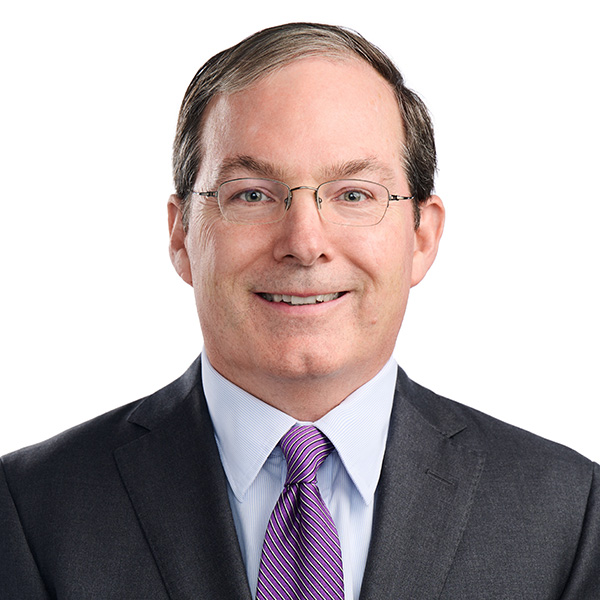The Global Macro & Asset Allocation team led by Henry McVey recently published its Outlook for 2025: Glass Still Half Full sharing our comprehensive views on the macro and geopolitical backdrop and where we see attractive investment opportunities around the world. In this note we focus on five key takeaways for our financial advisor and individual investor partners that are complementary to our latest Global Wealth Investment Playbook.
We enter 2025 with contrasting narratives unfolding. On the one hand, many around the globe have been suffering from the effects of inflation, rising inequality, and/or political unrest. Governments are contending with soaring deficits and shifting demographics while grappling with the pressing need for substantial investment in infrastructure, security, workforce training, and supply chain resilience. Concurrently, the traditional divide between economic and national security is becoming more ambiguous as we move from an era of benign globalization to one marked by great power competition 1 . Yet, despite all the cross currents in this new regime, our investment outlook for 2025 still tilts positive. As in 2024, our 2025 mantra is still that the ‘Glass is Half Full’. To be sure, investors should expect lower returns and more volatility this year. Nevertheless, stronger U.S. productivity and earnings growth, loosening global financial conditions, and limited net issuance (which we measure as total proceeds from IPOs, Levered Loans, and High Yield issuance as a percentage of GDP) around the world bolster our belief that the cycle is far from over, with significant opportunity for investors to lean into major investment themes.
Against this backdrop, at KKR we have increased our focus on collateral-based cash flows backed by hard assets, particularly within Infrastructure, Real Estate, and Asset-Based Finance via our balance sheet. These income streams, or the assets backing them, are typically structured to keep pace with inflation contractually, serving as key drivers of the outperformance of many Real Assets in this new investing regime. Further the downside protection 2 characteristics inherent in Infrastructure investments are particularly appealing. Meanwhile, Private Equity continues to be the asset class with the highest return potential—especially moving forward—amid pressures on Public Equities driven by elevated valuations, higher inflation volatility, and increased rates. We have observed a robust acceleration in deployment activity and monetization during an overall increase in global capital market activity. Moreover, we are still seeing several mega investment themes that will require trillions of dollars in private capital over the next decade to reach their full potential. In this context, we believe that investors aligned with our top-down Regime Change macro thesis have a compelling opportunity to achieve above-average returns. Our five key takeaways from the 2025 Outlook are as follows:
1. Our Regime Change Thesis Holds in 2025 and Beyond
2024 was what our colleague Ken Mehlman 3 described as the ‘year of elections.’ This global wave of voters heading to the ballot box underscored a hunger for ‘change’ candidates, particularly amid the pressures of high living costs since the pandemic. These election results also revealed profound secular shifts reshaping the global landscape, driven by intensifying concerns over national security, technological competition, and control of critical materials and resources including power, semiconductors, and skilled labor. In the United States, the ‘Red Sweep’ reinforced our macroeconomic framework which suggests that the post-COVID era will be marked by a ‘higher resting heart rate’ for inflation, nominal GDP, and interest rates coupled with elevated price volatility.
In this changing macro regime, we anticipate that President Trump’s vision for America will center on fostering accelerated growth and tackling substantial deficits through a combination of reduced regulation and tax cuts. This approach will, we believe, place a significant emphasis on economic independence, prioritizing resilient supply chains, and enhancing local energy production from traditional sources, especially in response to the surging energy demands driven by AI—an essential focus for President Trump’s new team. Striking a balance between growth, deregulation, and the implementation of tariffs will be crucial and challenging, particularly in light of potential reaccelerating inflation, larger interest expense outlays, and an expanding economic divide across various cohorts. These dynamics are likely to amplify inflation volatility, potentially increasing the correlation between stocks and bonds and demanding a reassessment of traditional asset allocation. Such a backdrop could complicate the Fed’s easing efforts. Our expectation is that the Fed will cut rates only twice in 2025, likely in the back half of the year. Against this setting, the appeal of non-correlated assets (including less dependence on global sovereign bonds) will likely grow as investors seek diversification, downside protection, and inflation hedges in an era of compressed returns and heightened volatility. Alternatives, too, are increasingly becoming a cornerstone for institutional and individual portfolios, as they can offer a pathway to stronger returns and resilience in a rapidly changing world.
EXHIBIT 1: As We Exit a Low Growth, Tight Fiscal, and Loose Monetary Environment, We Think That a Regime Change Is Occurring

2. We Maintain a Pro-Risk Stance, Tempered by a Disciplined Approach to Geographic Positioning
As we’ll speak more about in point #4, the performance bar will undoubtedly be greater in 2025 relative to 2023 and 2024 as higher valuations, more positive sentiment, and rising estimates may lead to a year of more modest returns. That said, we maintain a pro-risk stance but remain acutely mindful of the uneven and asynchronous global economic recovery since COVID. The U.S., periphery Europe (e.g., Spain, Portugal), Japan, and India continue to outperform China, core Europe (e.g., Germany), and much of the emerging markets. Among these, the U.S., driven by a robust productivity story bolstered by advances in automation and manufacturing, stands out as a beacon in a muted global growth backdrop. Crucially, stronger productivity can help mitigate the effects of higher deficits and lay a foundation for sustained long-term growth. While U.S. debt sustainability is not an immediate concern—given its status as the dominant global capital market— structural imbalances cannot persist indefinitely. Developed market sovereign risk should remain low until debt-to-GDP approaches critical thresholds of about 150% (currently at 122%, up from 115% in 2022). Encouragingly, the anticipated impact of tariffs on U.S. GDP is modest (-0.4%), and consumer health remains robust, with the gap between high- and low-income consumption growth expected to narrow.
In Europe, looser financial conditions have supported improved economic momentum, though significant risks remain. Broad-based tariffs pose a disproportionate threat to Europe’s manufacturing industries, while persistently high energy prices continue to weigh on growth. Service-oriented economies like Spain and Portugal are better positioned than manufacturing-heavy Germany, which faces added layers of political uncertainty. Meanwhile, the U.K, though a beneficiary of improved demographics and its more services-oriented economy, faces notable headwinds as it grapples with elevated fiscal debt and stubborn wage inflation. In Asia, we favor Japan and Southeast Asia over China. China faces mounting challenges, including external pressures from the tariff war and significant internal hurdles, such as still cautious consumer behavior, likely to intensify in 2025-26. As we enter 2025, our focus remains on economies with rising productivity (U.S.), strong corporate reform (Japan), domestic-driven growth (India), and a services-focus (Spain) to navigate the complex global landscape. In a world where trade barriers are increasing, we suggest tilting portfolios towards domestic consumption stories.
EXHIBIT 2: There Is Wide Variance Across Key Economic Indicators

3. Transformative Global Megatrends Are Giving Rise to Generational Investment Opportunities
Global secular shifts like the energy transition, reshoring, the retirement savings gap, labor shortages, and rising capital costs are reshaping corporate dynamics and offering compelling opportunities in Private Alternatives. While our full 2025 Outlook covers a broad array of macroeconomic and asset class themes, four stand out as particularly relevant for financial advisors and individual investors.
- The Security of Everything, Reshoring, and Resiliency Efforts : Rising geopolitical tensions, cyber threats, and shifting supply chains are driving CEOs to prioritize corporate security and resilience across energy, data, transportation, and pharmaceuticals. Investors can tap into this theme through Real Assets strategies focused on verticals like data centers, industrial facilities, and workforce/affordable housing. Private Equity offers additional exposure via cybersecurity and industrial automation investments.
- Energy Transition and Security : Tremendous opportunities lie in renewable energy and its supporting infrastructure, including transmission, semiconductor fabs, critical minerals, and vocational training for the workforce powering this transition. With AI-driven energy demand projected to outstrip supply, securing reliable power sources has become a critical national security priority for the U.S., China, and other global powers.
- Companies Transitioning from Capital Heavy to Capital Light Models : More public firms are going ‘private’ through aggressive buybacks and strategic capital allocation. They’re divesting heavy assets and securitizing to fund these moves, while reducing cyclical exposure for more sustainable earnings and returns. Executives are focusing on reducing cyclical components to build more sustainable businesses with clearer earnings and returns. This creates compelling opportunities to invest in either the equity of transitioning companies or the assets they sell.
- Intra-Asia Trade : Asia is increasingly trade-centric within the region, pivoting away from traditional ties with the West as U.S. policies lean toward ‘America First.’ Key investment areas include transportation infrastructure, subsea cables, data centers, and energy transmission. This intra-regional growth also favors local banks and expands non-bank lending, with significant opportunities in Liquid and Private Credit. India and Southeast Asia—especially the Philippines, Indonesia, and Vietnam—stand to gain substantially from these trends.
These themes underscore the transformative potential of Private Alternatives as a means to capture long-term growth in a rapidly evolving global landscape.
4. Our History-Tested Expected Returns Model Suggests That Private Markets Have the Potential to Offer Investors More Ways to Win Over the Next Five Years Versus Public Counterparts
For over a decade, we have refined our Expected Returns model, and our latest insights are suggesting a new investment reality. Returns over the next five years are likely to fall short of the past five, with stock-bond correlations remaining elevated, which diminishes bonds’ traditional role as portfolio shock absorbers. Our five-year forward median return across asset classes is 180 basis points lower than the prior period, underscoring the need for enhanced diversification and a more distributed approach to risk and return. Private Alternatives offer compelling opportunities to capitalize on the illiquidity premium. Our model projects Private Equity to deliver a 11.6% net return over five years, compared to 5.9% for the S&P 500. While it’s premature to turn bearish on U.S. Equities, investors should prioritize earnings-driven opportunities over multiple expansion, we believe, as the Fed’s stance will likely be less accommodative this cycle, raising the bar for upside surprises. In Credit, Private Alternatives will also shine, with Direct Lending strategies expected to yield 6.9%, outpacing the 4.4% return for a Global Aggregate basket and 5.1% for U.S. High Yield bonds.
EXHIBIT 3: We Continue to Think That Returns Will Look Different Relative to the Past Five Years

Why are Private Alternatives competitively positioned? Historically thoughtful asset selection, expertise in operational improvement, and timing of entry and exit has resulted in a premium return for private market investments versus public market indices—advantages that are often unavailable in public markets. With 85% of U.S. companies generating over $100 million in revenue remaining private, and Private Equity-backed firms outnumbering public companies since 2012, private markets now represent the epicenter of innovation and return generation. In a world of lower returns and higher volatility, private markets provide diversified pathways to outperform. The bottom line is that our Expected Returns work outlined above suggests that over the next five years Private Equity, Real Estate, and Infrastructure are especially well positioned.
5. Enhanced Portfolio Construction In Private Markets
At KKR, we believe owning assets where you can control your destiny is a critical strategy for both individual and institutional investors in today’s evolving investment landscape. We think certain private markets asset classes can play an outsized role in sound portfolio construction by mitigating capital markets uncertainty. With rising uncertainty around the trajectory of interest rates and the increased volatility anticipated within the capital markets, our focus has sharpened on collateral-based cash flows backed by hard assets like Infrastructure, Real Estate, and Asset-Based Finance. These assets offer predictable income streams and inflation-hedging benefits through contractual or pricing power mechanisms while also capturing upside from transformative trends like digitalization, decarbonization, and demographic shifts. Private Infrastructure, in particular, stands out for its downside protection and potential for outsized returns driven by exposure to durable, long shelf-life megatrends. Moreover, Real Assets, especially affordable housing investments, can serve as stabilizers within a portfolio, offering cash flows secured by tangible assets like land and buildings, and importantly, offer essential shelter for families. These investments reduce near-term volatility compared to capital market swings and uneven economic growth.
EXHIBIT 4: Having a Positive Beta to Inflation Is Becoming Increasingly Important In the New Regime

Private Equity remains the asset class with the highest return potential, particularly in an environment where Public Equities face headwinds from elevated valuations, inflation volatility, and rising rates. We favor control equity positions, with a focus on corporate carve-outs that provide substantial opportunities for operational improvements. Outside the U.S., Private Equity presents significant potential to outperform Public Equities, especially in Europe and key Asian markets. For example, in Japan, we see opportunities in inter-company holdings. There is an accelerating unwind of Japanese strategic holdings within the corporate sector, encouraging a wave of stock buybacks. Additionally, we advocate for more active capital management, including backing companies transitioning from capital-heavy to capital-light models through Private Equity.
EXHIBIT 5: There Has Been $30 Billion of Reductions in Japanese Strategic Holdings Year-to-Date

1. General (Ret.) David Petraeus, Chairman and Vance Serchuk, Executive Director of the KKR Global Institute observed this shift while guiding our portfolio companies and investors to better outcomes.
2. Downside protection is no guarantee against future losses.
3. Ken Mehlman is a Partner at KKR. He heads Global Public Affairs, is co-head of KKR’s Global Impact platform, and was the 62 nd Chairperson of the Republican National Committee. He served as served as Director of the White House Office of Political Affairs under President George W. Bush. Read more on the U.S. election .







